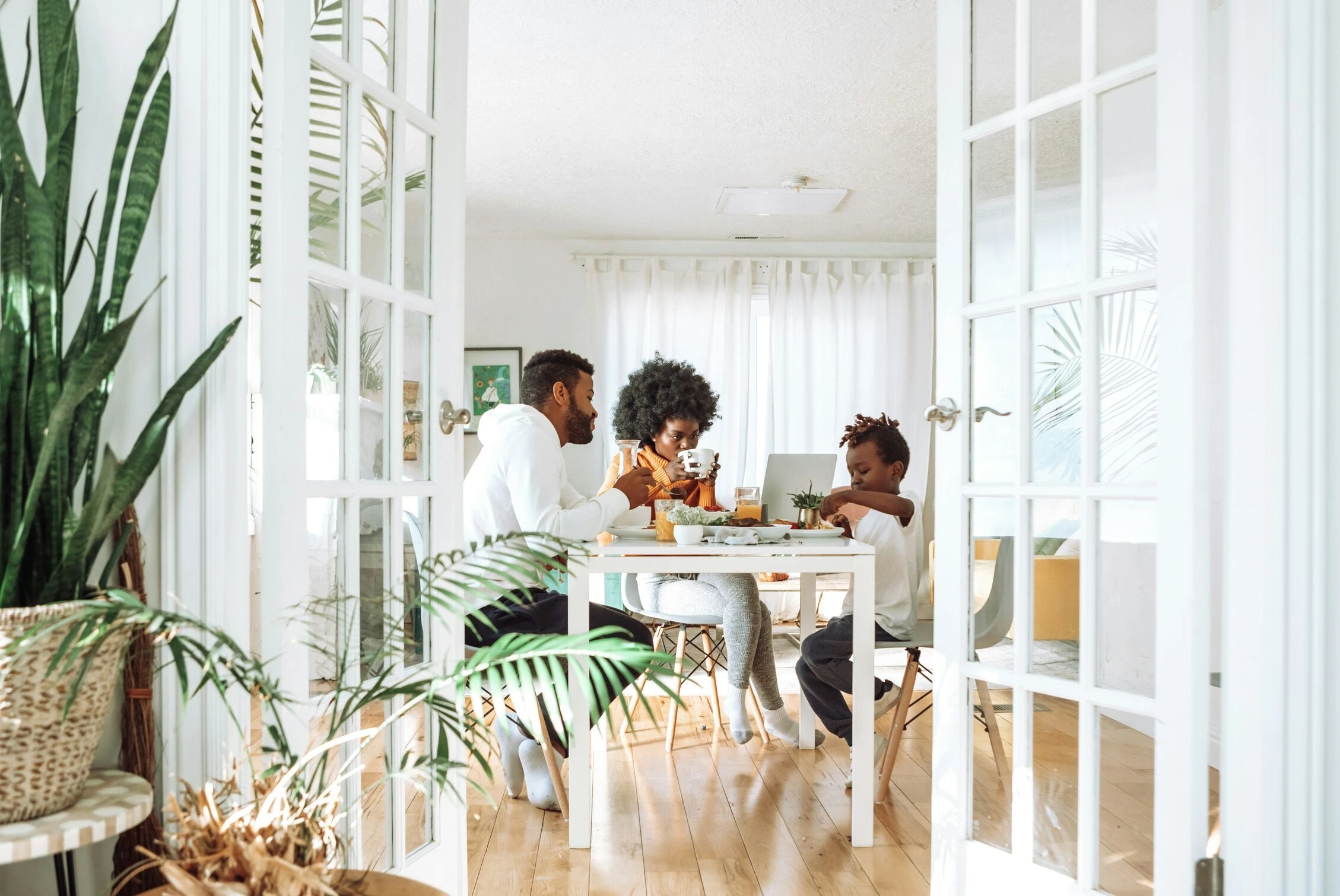How to Make a Rented Property Family Friendly

Renting a home as a family comes with unique challenges and opportunities. You want a safe, welcoming space that supports the everyday routines of your children and helps your family thrive—but you’re also bound by the terms of your tenancy, the limitations of your landlord’s rules, and the physical design of a home you don’t own.
Whether you’re a young couple preparing for a new baby, a single parent setting up in a flat, or a family of five making the most of a compact rental, the key is to work creatively and respectfully within your rental agreement. This guide will walk you through the practical, legal, and design aspects of making your rented property more family-friendly—without risking your deposit or crossing tenancy boundaries.
1. Know Your Legal Rights as a Family Tenant
Before you begin making any changes to your rented property, it’s crucial to understand your legal rights as a tenant with children. Unfortunately, many families still encounter outdated attitudes from landlords and letting agents, with “no children” or “no DSS” policies cropping up in listings. However, these kinds of restrictions are often unlawful and can be challenged.
The Equality Act 2010 prohibits indirect discrimination based on characteristics such as sex, pregnancy, maternity, and family status. This means landlords cannot legally refuse a tenancy just because you have children. In addition, recent legal decisions have confirmed that blanket bans on tenants who receive housing benefits (commonly referred to as DSS tenants) are discriminatory.
Knowing your rights puts you in a stronger position when viewing properties, negotiating terms, or challenging unfair practices. If you ever feel that your application has been rejected unfairly because of your family status, you can seek support from legal bodies or housing charities such as Shelter or Citizens Advice.
2. Understanding Your Tenancy Agreement
Even when your rights are respected, tenancy agreements often include clauses that limit what you can physically change about your home. These restrictions are designed to protect the property’s condition, but they can feel at odds with the needs of a growing family.
It’s important to understand exactly what your agreement allows and forbids. Many standard rental contracts prohibit permanent alterations—like painting walls, drilling holes, or changing locks—without written permission from the landlord. In some cases, even minor changes like putting up blinds or hanging heavy pictures can breach your tenancy terms.
Reading your agreement carefully helps you avoid problems later, especially when it comes to your deposit. If you're hoping to make any family-focused modifications—such as installing safety gates, setting up extra storage, or baby-proofing cabinets—start by identifying what requires permission and what doesn’t. A transparent, respectful approach with your landlord will usually open up more options than you might expect.
3. Childproofing Without Permanent Damage
Child safety is one of the biggest priorities for families renting a home—but also one of the trickiest to manage when you can’t make permanent changes to the property. Whether you’re trying to secure furniture, prevent access to staircases, or protect little fingers from sharp corners, most landlords won’t allow permanent installations that involve screws, nails, or structural changes.
The good news is that childproofing has come a long way in recent years. There are now dozens of non-invasive solutions that can help you protect your children without putting your deposit at risk. From pressure-mounted stair gates to adhesive safety locks and corner guards, many childproofing tools are specifically designed for renters.
Even high-risk areas like kitchens, bathrooms, and windows can be made safer using removable and non-damaging methods. With the right products and a bit of strategic thinking, it’s entirely possible to create a safe environment for babies and toddlers without breaking your lease terms.

4. Creating Family Zones Within Small or Shared Spaces
One of the biggest challenges for families renting in the UK—especially in cities—is a lack of space. Rental properties aren’t always designed with family life in mind, and it's common for bedrooms to be shared or for living rooms to double as playrooms and offices. Creating clearly defined “zones” for different family activities can help restore order and routine, even in the smallest flats.
Family zoning is the art of dividing up your living space according to function—sleep, play, study, eat, relax—so that each member of the household has what they need, when they need it. And you can achieve this without knocking down walls or installing anything permanent.
By using furniture, rugs, portable storage, and lighting, you can create the feeling of separate rooms within a single space. These small adjustments can reduce clutter, ease tension, and give children a sense of consistency, structure, and independence, even in compact or unconventional layouts.
5. Maximising Storage in Rented Homes
A common pain point for families in rented properties is the lack of built-in storage. Most rentals don’t come with much more than a basic wardrobe or a small airing cupboard. When you’re managing toys, school supplies, clothes for every season, and household essentials, creative storage becomes essential.
Installing custom shelving or loft storage is usually off the table for renters. But that doesn’t mean you're stuck with overflowing cupboards or chaotic rooms. With a few clever, low-cost solutions—like under-bed bins, stackable boxes, over-door organisers, and modular units—you can dramatically increase your usable storage space.
The goal is to keep things tidy, accessible, and adaptable as your children grow. Rotating toy boxes, labelling bins, and using multi-purpose furniture can make a big difference in both functionality and family harmony.
6. Decorating Without Violating Your Lease
Just because you can’t paint the walls or hang wallpaper doesn’t mean you can’t make your rented property feel like a true family home. Landlords typically prefer to keep walls neutral, but there are many renter-friendly ways to bring colour, personality, and warmth into your space.
Decorating a family home is more than just aesthetics—it also helps children feel safe and settled. Whether it’s displaying artwork, hanging family photos, or creating a cosy reading corner, these personal touches can transform a plain rental into a space that reflects your values and lifestyle.
With the wide range of removable products available—like wall decals, adhesive hooks, and temporary wallpaper—you can create a cheerful, child-friendly environment without putting your deposit at risk or violating your lease. These items are easy to install and remove, and they won’t leave lasting marks behind.
If you want to add some personal touches to your rented family home, take a look at our guide about how to decorate a rented home.

7. Making the Kitchen and Bathrooms Kid-Friendly
The kitchen and bathroom are two of the most high-risk areas in any home when it comes to child safety. Hot surfaces, sharp tools, slippery floors, and cleaning products are all potential hazards—especially for toddlers and young children.
Renters may not have the freedom to renovate these areas or replace fixtures, but that doesn’t mean you can’t make them safer and more accessible. With a few simple additions, like non-slip mats, child locks, step stools, and suction-mounted accessories, you can create a safer and more child-friendly environment.
In the kitchen, you can organise items so that children only access safe drawers or cupboards. In the bathroom, small adaptations can make bath time safer and more enjoyable, while helping children gain independence. These solutions are removable, inexpensive, and often portable—making them ideal for rental homes and growing families.
8. Noise, Privacy, and Sleep Hygiene in Rentals
Noise can be a serious issue in many rental properties, particularly in older buildings or shared dwellings with thin walls and creaky floors. For families—especially those with babies or light sleepers—poor sound insulation can disrupt routines, cause stress, and affect quality of life.
Creating a peaceful, private sleeping environment is essential for your child’s development and your own wellbeing. While you may not be able to add insulation or soundproof walls, you can take practical steps to manage noise.
From rearranging furniture to absorb sound, to using white noise machines, blackout curtains, and fabric wall hangings, there are renter-friendly solutions that make a big difference. Taking the time to improve your acoustic environment can lead to better sleep, better moods, and a more harmonious home life.
9. Outdoor Areas, Safety, and Play
Access to safe outdoor space is a huge bonus for any family. Gardens, balconies, patios, or even communal green areas can give children room to explore, move, and play—something especially important in early childhood development.
Unfortunately, not all rentals offer private outdoor space, and even when they do, safety is not always guaranteed. Fencing may be inadequate, surfaces uneven, or areas shared with other tenants. Still, there are creative ways to adapt outdoor spaces for child safety and family use.
If you’re lucky enough to have a garden, it can become an extension of your home—ideal for play, fresh air, and relaxation. Even without a garden, you can make use of nearby parks or bring the outdoors inside with sensory toys, plants, and play tents. With a bit of effort, you can provide outdoor-like experiences regardless of your property’s footprint.
10. Working Proactively With Your Landlord
While your tenancy agreement lays out formal rights and responsibilities, your relationship with your landlord can make a big difference in how flexible and supportive your rental situation is. A landlord who understands family needs may be willing to allow small changes or improvements that make your life easier.
Good communication is essential. If you’d like to install a stair gate, repaint a room, or even add a small storage shed, it’s always best to ask first. Present your request clearly and offer solutions that show you’ll restore the property before you leave or improve it at your own expense.
Landlords are more likely to respond positively when tenants are respectful, organised, and committed to maintaining the property. A strong landlord-tenant relationship also means issues like damp, faulty boilers, or broken fixtures are more likely to be resolved quickly—something that’s especially important when children are involved.
Check out our guide for tenants about how to maintain a good relationship with your landlord.

11. Reviewing Your Rental Property: Help Other Families
One of the most powerful things you can do as a tenant is to share your experience to help others. By leaving a detailed, honest review of your rental on a platform like Marks Out Of Tenancy, you provide crucial insights for future family renters.
Your review can shine a light on issues that might not be clear from a property listing—such as the landlord’s responsiveness, whether the building is well insulated, or if the neighbourhood is child-friendly. Families looking to rent will benefit enormously from this kind of first-hand information.
Think of your review as a way to “pay it forward.” Whether your rental experience has been great, difficult, or somewhere in between, your voice matters. By sharing what worked and what didn’t, you contribute to a more transparent and supportive rental market for families across the UK.
Final Thoughts
Making a rented property work for your family can seem overwhelming at first—but with thoughtful planning and the right approach, you can create a home that’s safe, comfortable, and tailored to your family’s needs.
From understanding your rights and reading the fine print of your lease, to making smart design choices and working cooperatively with your landlord, you have more control than you might realise. Even without owning the walls around you, you can still build a secure and nurturing space where your family can grow and thrive.
Have you lived in a rented home with your family? Share your experience on Marks Out Of Tenancy and help other families find the right place to call home.
